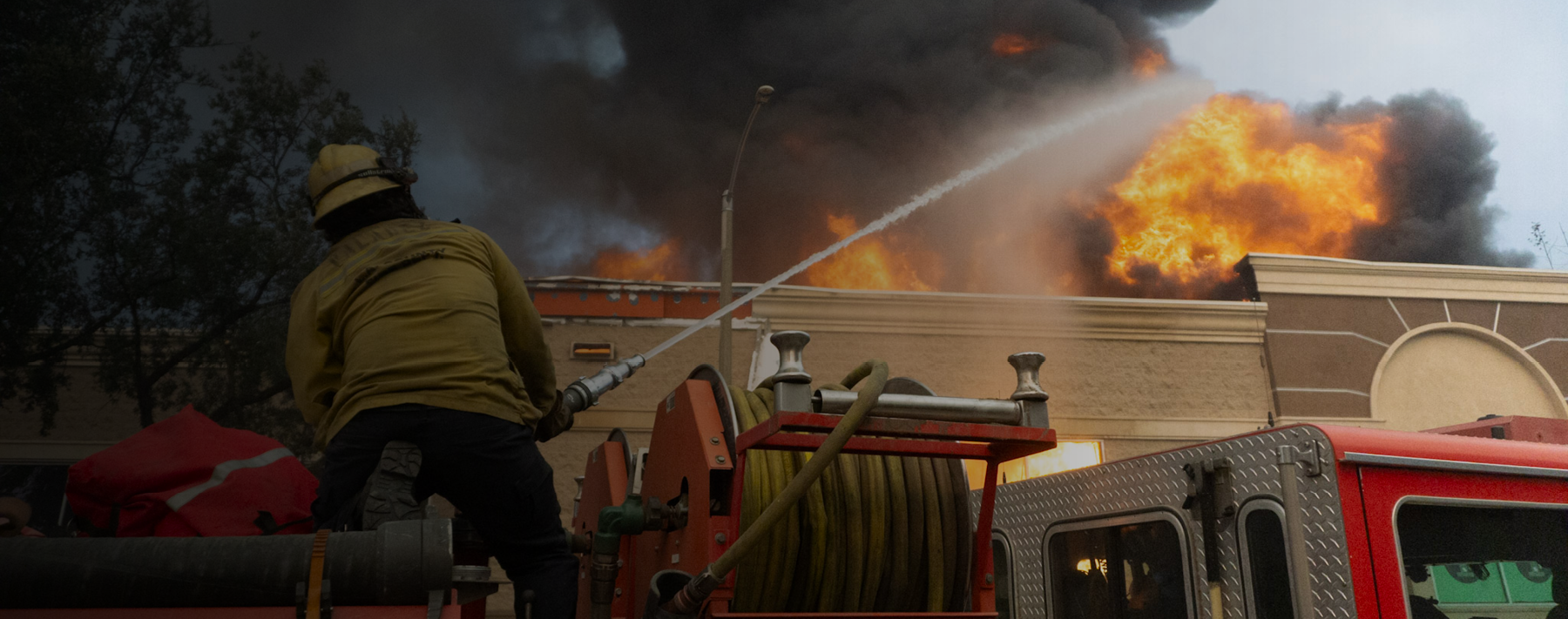The need for effective public safety wellness programs has never been more clear. Facing escalating rates of burnout, PTSD, substance misuse and suicide within their ranks, many agencies are providing resources to bolster the mental, physical and emotional health needs of their employees. But recognizing the need for wellness is only the first step. The long-term challenge lies in building wellness programs that deliver meaningful, measurable impacts on the lives of first responders.
In the recent Lexipol webinar, “Ask the Experts: Building Effective Wellness Programs in Public Safety,” a team of wellness experts shared practical insights and strategies based on years of experience working with public safety personnel. Panelists included:
- Jaime Brower, vice president of peer support and clinician training and certification, Lexipol
- Mandy Nice, senior customer enablement manager, Lexipol
- Emily Hitchings, MA, LPCC, NCC, programming director, Lexipol
- Chief (Ret.) Neil Gang, market ambassador, Lexipol
Below, we’ll break down their best advice and provide some crucial takeaways.
Why Wellness?
During the past several years, the issue of wellness has finally risen to the top as a critical need in public safety agencies. “Everything we do in our business revolves around our employees being healthy,” says Chief Gang. “There’s a direct correlation between health in an organization and how they perform for our communities.”
In other words, wellness isn’t a “nice to have” — it’s a mission-critical priority. A comprehensive wellness program addresses not only crisis response, but also the day-to-day health maintenance of public safety professionals. This includes mental, physical, emotional and even financial wellness.
Dr. Brower emphasizes that prevention is not only better for individuals, but also a cost-effective strategy for the agencies that employ them. “People with depression miss an average of 32 days of work per year,” she notes. “PTSD claims can exceed $250,000 each. The cost of not investing in wellness is staggering.”
When budgeting for wellness activities and resources, agencies need to factor in the cost of chronic absenteeism, of replacing employees lost to mental and physical health problems, of managing the fallout when someone loses control and misbehaves.
Experience and research both demonstrate that investing in wellness improves retention, reduces burnout and saves money — all while ensuring public safety professionals can serve their communities at the highest level.
Watch a clip:
Wellness Advocates
Effective public safety wellness programs need leadership — and not just from the top down. Forward-thinking agencies empower wellness advocates at every level.
“One of the best first steps that you can take … is to do a needs analysis,” says Nice. “Start with what your agency wants to improve in wellness. … Then you need a good wellness coordinator to expand it and keep everybody connected.”
That wellness champion could be a dedicated coordinator, a respected line-level employee or a chief who leads by example. The role involves more than cheerleading; it also entails coordinating services, tracking results and ensuring every aspect of the program is connected to real employee needs.
Nice shares compelling examples of agencies with full-time wellness coordinators that saw big reductions in workers’ compensation costs and measurable improvements in fitness and injury prevention. “If you have a wellness program coordinator or wellness program manager helping gather some of those qualitative results — such as testimonies — that can really support the longevity of your wellness program,” she adds.
Watch a clip:
Peer Support
In public safety, peer support refers to agency members who provide confidential, empathetic support to their colleagues, drawing from rigorous training and shared experiences to help others navigate personal and professional challenges. It is often the first line of emotional support for first responders, offering an approachable and trusted alternative (or companion) to formal clinical services.
“If there’s only one thing you can do to get your wellness program started,” Chief Gang says, “start with a trained, well-managed peer support team.”
Peer support is consistently cited as the preferred resource for first responders. In fact, according to a 2021 Fraternal Order of Police survey, 73% of officers said they would prefer to talk to a peer over a mental health professional when experiencing personal or job-related stress.
But peer support only works when it’s properly executed. Dr. Brower emphasizes the need for high-quality training and ongoing education: “It is important to have a good, well-trained peer support team,” she says. “When we train them, we empower them. We give them the information they truly need to make a difference.”
Hitchings stresses the importance of formalizing peer support: “They should be in policy and integrated into line-of-duty death response, critical incident response … they are showing up for people, not just in the hard times, but in the good times too.”
Watch a clip:
Boosting Engagement
So, you built the program. Now how do you get people to use it?
“One of the best first steps that you can take … is to do a needs analysis,” Nice advises. “You’re doing your due diligence by finding out what’s possible.” This can take the form of informal conversations, focus groups or anonymous surveys.
The panelists provided some additional engagement tips:
- Refresh your program regularly to keep it relevant.
- Promote success stories and testimonials to inspire others.
- Ensure your wellness efforts are inclusive, serving sworn and non-sworn, field and office, across all ranks and shifts.
- Demonstrate leadership buy-in. When the chief talks about using the agency’s wellness resources, others will follow.
“And let’s stop calling it officer wellness,” Chief Gang counsels. “It’s organizational wellness. Everyone in the agency deserves support.”
Watch a clip:
Measuring Success
It’s difficult to improve something that doesn’t get measured. Tracking results is an important part of justifying the value of a department’s wellness program. But what does success look like?
“Start by collecting both qualitative and quantitative data,” says Hitchings. “How many people are using services? How many days of work are saved? What are people saying about their experiences?”
Here are some additional examples of success:
- Big increases in behavioral health services utilization after wellness efforts launched.
- Measurable reductions in substance misuse.
- Fewer sick days and light-duty assignments.
Unfortunately, not every benefit of a wellness program can be easily measured. “Sometimes the success is in what didn’t happen,” says Nice. “An injury that didn’t occur. A life that didn’t spiral.” But that shouldn’t stop an agency from implementing or even expanding wellness offerings.
In closing, Chief Gang throws down the gauntlet by issuing a call to action for all public safety organizations. “Does your agency have a wellness budget?” he asks. “Because if you’re not budgeting for it, you’re not prioritizing it. And if you don’t prioritize your people, everything else breaks.”
Watch a clip:
Leadership Is Key
Throughout the webinar, one prevailing theme that comes up again and again is leadership.
“Leadership is the missing ingredient,” says Chief Gang. “You want to create a culture of wellness? That starts with the chief. That starts with every supervisor modeling self-care, prioritizing their team and showing up for these programs.”
Dr. Brower sums it up this way: “Responders who are well respond well.”
Whether you’re just beginning your wellness journey or looking to take your program to the next level, the message is clear: Wellness isn’t a checkbox. It’s a culture. And it’s one we build together.



